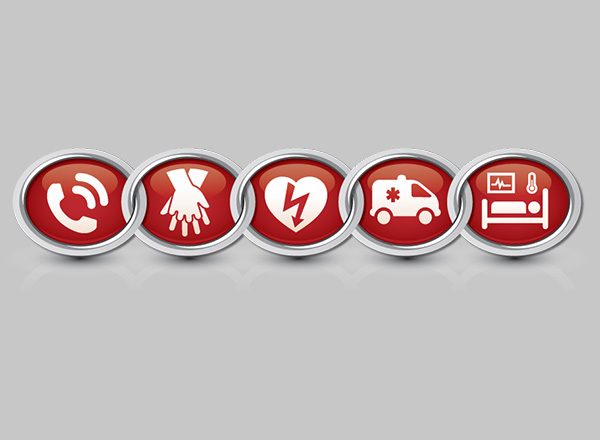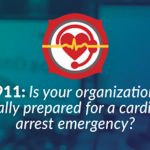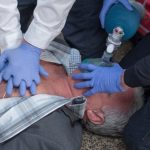When asked to picture the human body, what comes to mind? Most people don’t focus on a single component like a limb or an organ. Instead, they think holistically — looking at the body as an artfully designed system, where every component works in tandem to create life.
Ideally, we’d all have that same holistic “systems” viewpoint when tackling the overlooked epidemic known as out-of-hospital cardiac arrests:
- An estimated 350,000 OHCAs annually in the U.S. alone
- Between 70-90% of patients die before reaching a hospital
- That’s 10x more deaths from opioid overdoses, auto fatalities or gun violence
Yet OHCA garners no headlines. No public outrage. No push for funding to end this unnecessary loss of life.
Why? In theory, because it’s a hard problem to solve.
You’ve likely heard of the “Chain of Survival” — the five links that improve a cardiac arrest victim’s chances of survival and recovery:
- Recognition of cardiac arrest and activation of the emergency response system
- Early CPR with an emphasis on chest compressions
- Rapid defibrillation
- Basic and advanced emergency medical services
- Advanced life support and post-cardiac arrest care
From a family member or bystander to a telecommunicator, EMT and hospital personnel, each link in the chain of survival can involve someone of widely varying knowledge and training. So, it’s difficult to think holistically when no single entity has accountability for every link in the chain. It’s human nature — we’re focused on playing our role to the best of our abilities rather than looking at the larger picture.
It takes a system to save a patient
Improving OHCA outcomes starts with a shift in thinking. Rather than focusing on individual links in the chain, it’s vital to start thinking in terms of systems: “How do we all work together to optimize our processes from start to finish?”
It’s been proven that survival rates in a community will improve if their EMS and PSAPs work together, have strong leadership, and foster a culture of excellence. In other words, forming a true end-to-end system.
When the Chain of Survival works seamlessly from beginning to end, an out-of-hospital cardiac arrest doesn’t have to be a death sentence. It can mean more years for 350,000 people to live, love and contribute to our world, and the end to a truly unnecessary public health epidemic.
Starting the process of improving OHCA outcomes
To reverse dismal survival rates, every community should be looking at ways to improve how they manage cardiac arrests. But where to begin? It all starts with data — understanding how effective your chain of survival is right now. We recommend first asking these six questions:
- What is our community’s Utstein survival percentage?
- How frequently do bystanders perform CPR?
- What is our time between 911 call and delivery of T-CPR?
- What is our department’s median compression fraction for CPR calls?
- How do our telecommunicators and EMS personnel train for cardiac arrest?
- How do we measure performance on cardiac arrest calls?
Once you’ve established a benchmark for your current performance, you can then identify and prioritize the areas that need improvement and begin the process of developing an effective quality improvement plan.
“Bystander CPR rates are highest in communities where public safety answering points (PSAPs), or dispatch centers, provide telephone CPR (T-CPR) instructions.”
— Michael Christopher Kurz, MD, MS-HES, FACEP, FAHA, Chair of American Heart Association T-CPR Taskforce
Is your team operating within High-Performance Standards?
Start by taking the T-CPR Pulse Check. American Heart Association T-CPR Recommendations and Resources provides guidance to construct and maintain a science-based T-CPR program.
Want to dive deeper into the science behind successful training and quality improvement initiatives?
Read the full AHA scientific statement or download the summary. Have questions on implementing a resuscitation quality initiative in your community? Ask an RQI expert — we are always here to help. Contact us for more information.









